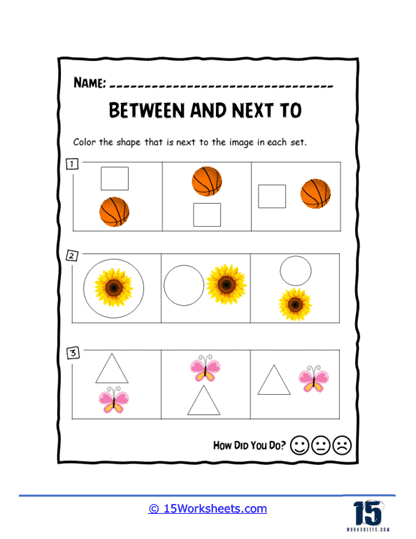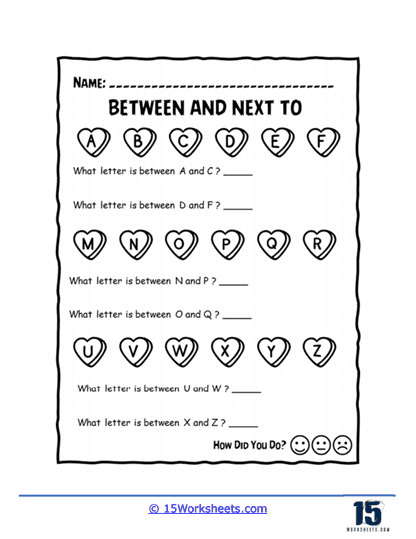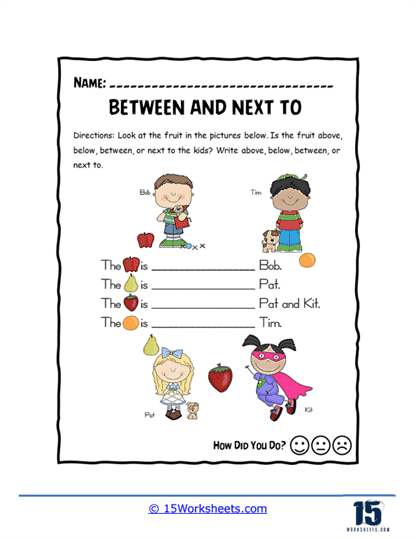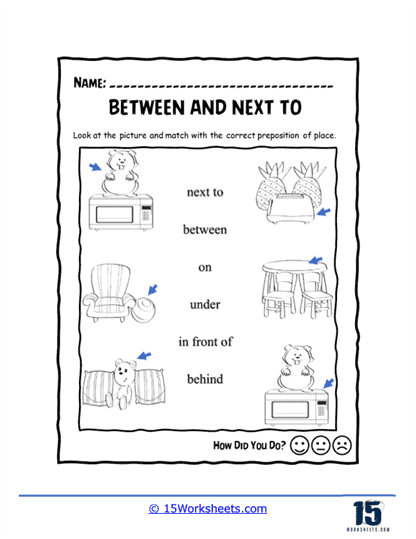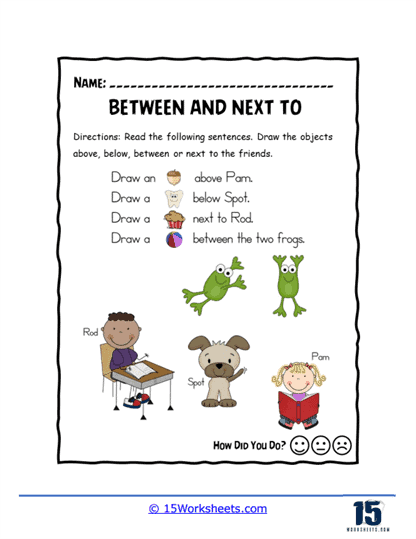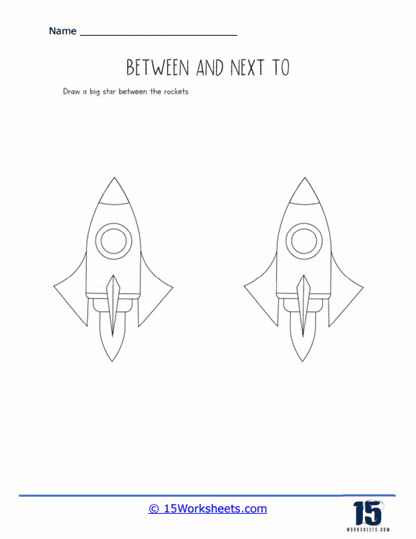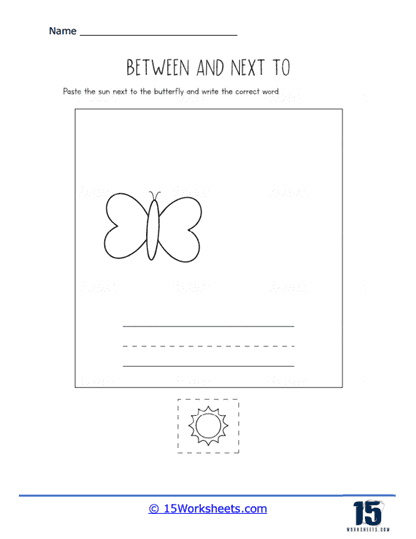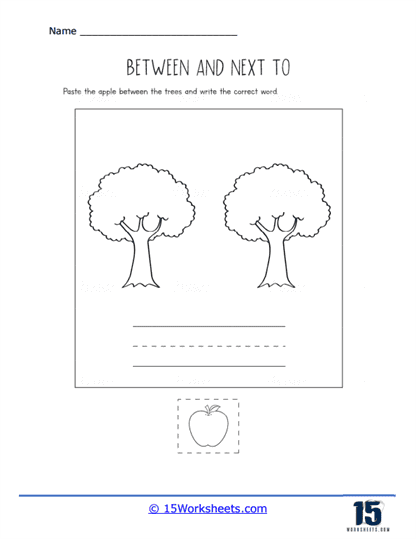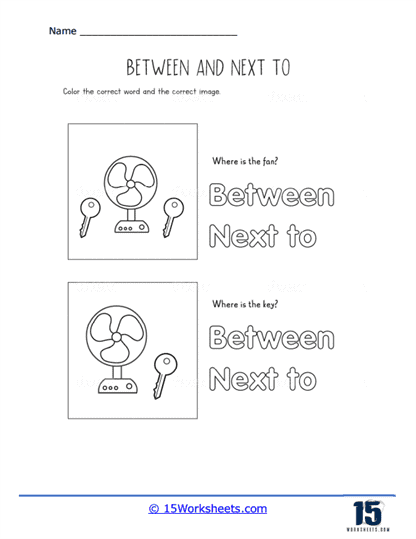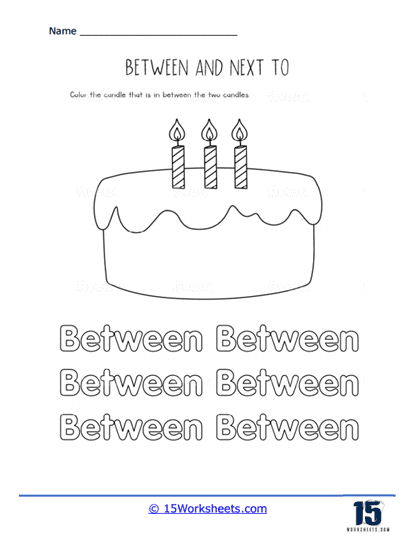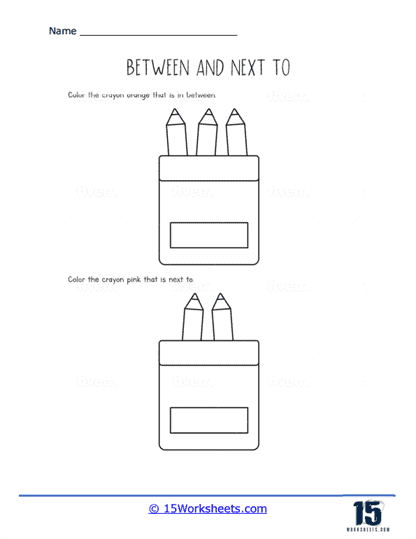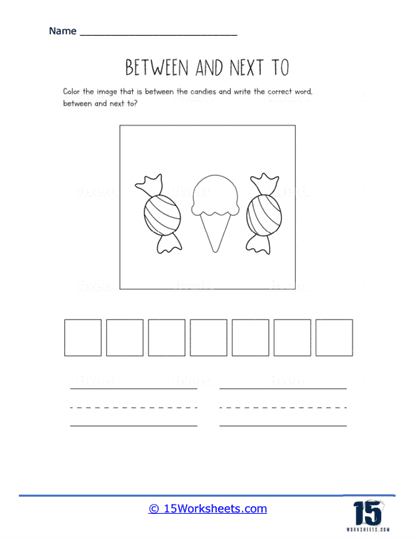Between and Next To Worksheets
About These 15 Worksheets
These worksheets help students work on the concepts of the positions (Between) and (Next to). Both of these terms are used to describe the relative positions of objects or entities. They help kids to understand spatial relationships. These words are prepositions that describe an object’s position relative to other objects.
In these worksheets, you’ll find images or diagrams where certain items or characters are placed next to each other or between others. The task would then be to identify and label or circle the objects based on their position.
For example, you might see a worksheet with a picture of three animals – a dog, a cat, and a rabbit. The dog could be between the cat and the rabbit. The task for the child could be to color the animal that is “between” the other two.
Alternatively, the worksheet might have two houses with a tree next to one of them. The child could be asked to circle the house that has the tree “next to” it.
Between – When something is positioned “between” two objects, it means it is located in the space or area separating those objects. The object in question is situated with one object on either side. It creates a sense of being surrounded by or enclosed within those objects.
Example of Between – In a row of three chairs, if Alice sits between Bob and Carol, it means that Alice occupies the seat that is positioned with Bob on one side and Carol on the other side.
Next to – When something is positioned “next to” an object, it means it is located immediately adjacent to or alongside that object. There is no object in between. It indicates a close proximity or direct contact with the referenced object.
Example of Next to – If there are two chairs side by side, and Alice sits next to Bob, it means that Alice is seated in the chair immediately beside Bob.
In summary, “between” suggests an object is positioned in the middle of two other objects, while “next to” indicates that an object is located immediately beside or alongside another object, without anything in between.
How To Teach This Concept
Teaching the concepts of “between” and “next to” to children is an essential part of their early spatial and cognitive development. This understanding aids in their interpretation of the world around them, enhancing their language skills and improving their comprehension abilities. Here is a detailed guide on how to effectively teach these fundamental concepts:
1. Demonstration – Start by demonstrating what “between” and “next to” mean using real-life objects. For instance, line up three toys and put one toy “between” the other two, explaining as you do so. Similarly, place one toy “next to” another toy. This allows the child to visually connect these concepts with the physical world.
2. Interactive Play – Children learn best when they play. Set up interactive play scenarios where the child can experience being “next to” or “between”. They could stand “between” two friends or sit “next to” a sibling. They can also arrange their own toys “next to” or “between” each other, helping them understand these prepositions in a fun, engaging way.
3. Storytelling – Use picture books or stories that incorporate these concepts. As you read, point out characters or objects that are “next to” or “between” others. Discuss the pictures and ask the child to identify which objects are “between” or “next to” each other. This will not only reinforce these spatial concepts but also improve their language and listening skills.
4. Real-Life Scenarios – Reinforce the concepts of “next to” and “between” during daily activities and routines. For example, during meal times, you might mention that the spoon is “next to” the plate, or the child is sitting “between” mom and dad. This frequent use of spatial terms in everyday conversation will help solidify these concepts.
5. Art and Craft Activities – Engage the child in drawing or craft activities. Ask them to place stickers “between” two lines or draw a sun “next to” a house. This allows the child to express these concepts creatively, which further aids in their understanding.
6. Worksheets – “Between” and “Next To” worksheets offer an excellent way to practice these concepts. Worksheets may involve coloring objects that are “next to” something or drawing lines to objects that are “between” others. This not only reinforces the concepts but also helps improve the child’s fine motor skills.
7. Games – Incorporate these concepts into fun games. For instance, you could play a game of “Simon Says” using the terms. You could say, “Simon says, stand between the tree and the bench,” or “Simon says, sit next to your friend.” These games provide a fun, relaxed environment for the child to apply these concepts.
8. Songs and Rhymes – Songs and nursery rhymes with corresponding actions can be an effective way to teach these concepts. Children can act out the lyrics, experiencing “next to” and “between” in a fun and memorable way.
Teaching the concepts of “between” and “next to” is about providing a multitude of experiences and repetition. Remember, it’s important to be patient and consistent. Reinforce these concepts in daily conversations and through different activities. By making the learning process enjoyable and immersive, these spatial skills will soon become a natural part of a child’s understanding of their world.



